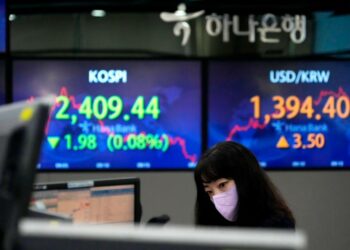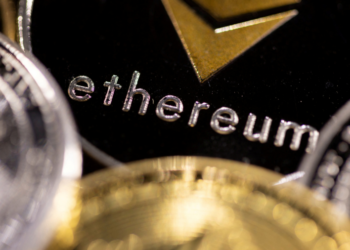A shortage of lithium salts essential for producing batteries for mobile devices and electric vehicles is putting the energy transition at risk.
Over the past 18 months, the prices of lithium carbonate and lithium hydroxide have risen at absurd rates, and the squeeze has only accelerated since the beginning of this year.
In January 2021, according to S&P Global Platt’s, lithium carbonate cost about $9,600 per tonne. At the end of this January the same material was quoted at more than $50,000 per tonne. That is panic buying, not rational price discovery.
This is a consequence of demand that has been strongly supported by regulations and consumer choices in Europe, the US and China, and supply that is constricted by under-investment in recent years. While there is some lithium on the way from new or expanded mines in Australia, the US, Brazil and elsewhere, other sources that had been anticipated in Chile and Serbia are being shut down or curtailed by local opposition.
“Technology”, or the use of different battery chemistries and more efficient use of available materials, is constrained by physics or weight requirements. Even intensive engineering and project development will not readily bridge the gap in lithium requirements until 2030, 2035 or 2050, or whatever policy target is picked.
Magical thinking will not help. As Christophe Pillot, a batteries consultant and the director of Avicenna Energy in Paris, says, there is no equivalent in batteries of ‘Moore’s Law’, which states the number of components that can be crammed on to an integrated circuit doubles every year.
“Energy density, battery lifetimes charging time and so on improve, but there will be no revolution in the next five to ten years. There will be, say, 5 per cent annual improvements in performance, and that will take work.”
Governments in the US and Europe are keen to have clean-looking battery cell factories, but the mining and refining of metals is less camera ready. The new Chilean government is insisting, reasonably, that using virtually irreplaceable fossil water to produce more lithium salts in the Atacama Desert is environmentally and socially unsound.
The ready response of environmentalists in rich countries is that batteries should be made with recycled materials. However, scrap must be collected and made ready to be remanufactured; losses are inevitable. Even theoretically, that does not increase the total amount of required battery materials.
We have collectively been spoilt by the fantastic increases in utility of microprocessor-based mobile devices. That is where Moore’s Law has worked. But propelling vehicles carrying goods and people requires magnitudes more energy than phones or laptops. Also, after a point, cramming more energy into packs increases the risk and severity of battery fires.
China has been faster to adopt battery vehicle use than the US or Europe. It has, though, avoided some battery materials imports and shortfalls by using more lithium-iron-phosphate compounds for certain parts in place of the expensive nickel and cobalt compounds that provide more range for rich world customers. Cheap and local is a rational choice for intracity cars, small trucks and buses.
Even China cannot engineer away all its lithium requirements, which depend heavily on ore imported from Australia and salts from Chile. Tellingly, the most commonly used lithium price series are for lithium carbonate quoted in Chinese yuan per tonne.
Why not get people — somewhere — to mine and refine more lithium, especially at these prices?
As one mining investor says: “Yeah, eventually some deranged Australian diggers will come in, and the people just holding inventory now (or speculating — ed.) will sell at some point. Then the prices will collapse, as in the last cycle.” Back then the lithium price plunged from over $17,000 per tonne in 2015 to about $8,000 in 2018, then bounced around until the beginning of last year.
EV and utility storage manufacturers could, hypothetically, respond by contracting ahead for the four or five years’ lead time needed for mining investments. Sounds easy, but as one industry economist says, “A year and a half ago, in the middle of Covid, who would have made a five year bet on a huge increase in the vehicle uptake? The automakers could turn around faster than upstream metal supply.”
You might think government investment in research and development, could have kept up more innovation, but no. Professor Donald Sadoway of MIT, a specialist in battery technology, says “Even ARPA-E (the US energy research agency) wants go-to-market plans and only happy endings.” Expect to pay up for your laptops and EVs.










